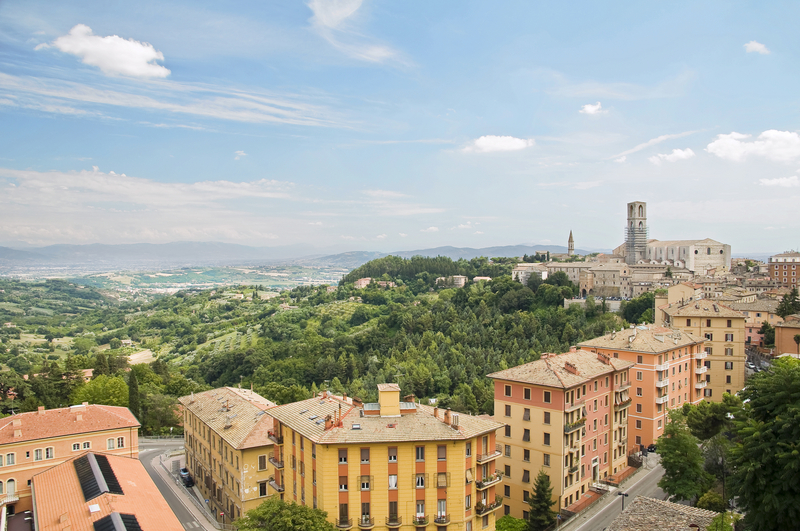Nestled in the heart of Italy in the province of Umbria is the ancient city of Perugia. Predating Etruscan civilization, this lovely walled city has been the prize in battles by such notable historical figures as Mark Antony and the great Octavius Caesar who conquered the city. It later came under the control of various rulers including the Papal rule of the Roman Catholic Church. In 1861, Perugia was united with the rest of the province and became a part of the Kingdom of Italy.
While relatively small by European standards, Perugia is the largest city and the capital in Umbria. It is perched atop one of the many hills in the Umbria region of Italy affording a beautiful view of the region from nearly any vantage point. Umbria is also known as the Green Heart of Italy due to its expanse of woodlands and rolling green hills.
 One of Perugia’s most notable festivals is the Eurochocolate, the annual chocolate festival that takes place each October. Perugia is renowned for its delectable chocolate and the festival attracts visitors and participants from all over Europe. The city also hosts the International Umbria Jazz Festival each July and features the biggest names in jazz music.
One of Perugia’s most notable festivals is the Eurochocolate, the annual chocolate festival that takes place each October. Perugia is renowned for its delectable chocolate and the festival attracts visitors and participants from all over Europe. The city also hosts the International Umbria Jazz Festival each July and features the biggest names in jazz music.
Throughout the city’s turbulent history, surprisingly many examples of the architecture of centuries past have managed to survive, including the ancient city walls that served as protection from invaders. These walls date back as far as the 6th century BC and are still relatively intact. There are six gates remaining of the original seven that allow access to the city.
Perugia is known for its many outstanding churches thanks to its long association with the Papacy, oftentimes serving as an alternative location to Rome for the Popes due to the safety afforded by the city walls. Within the city there are several churches of note that should not be overlooked when visiting.
One of Perugia’s most famous churches is the Cathedral of San Lorenzo. A magnificent Gothic structure built in the 15th century, it is said to house the wedding ring of the Virgin Mary and is where a copy of the 12th century Stone of Justice is kept.
The Basilica of San Domencio is a fine example of an early 14th century church with outstanding Gothic and Renaissance detailing. It is also the location of the tomb of Pope Benedietto XI.
The Church of San Pietro is a Benedictine abbey that features frescoes from the 14th and 15th century, beautiful marble columns and a series of paintings of Biblical scenes from around 1600. It is also home to one of the most significant collections of artwork in Perugia and features the works of such artists as Antonio Vassilacchi, Giorgio Vasari, Raphael, Guido Reni and many others.
In the city center is the Piazza IV Novembre, the beautiful town square. Located in the center of the square is the Fontana Maggiore, a Medieval fountain in exquisite Gothic design crafted from white and pink marble. Nearby is the Palazzo dei Priori and the National Gallery of Umbria, home to a stunning collection of works from Medieval times through the present.





